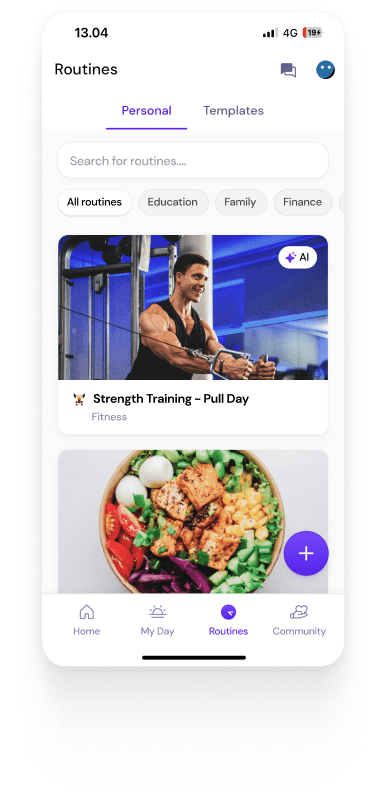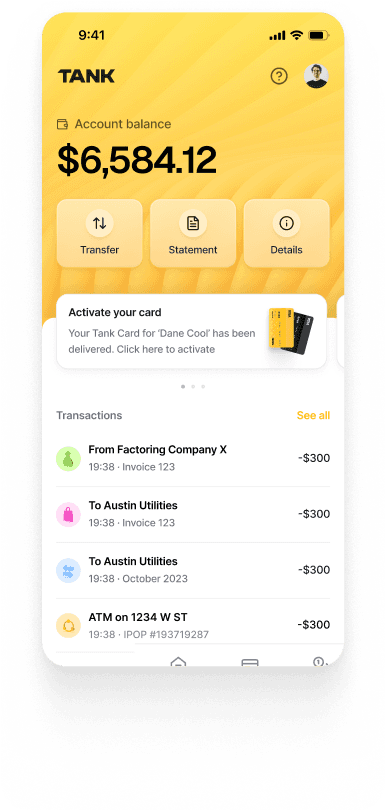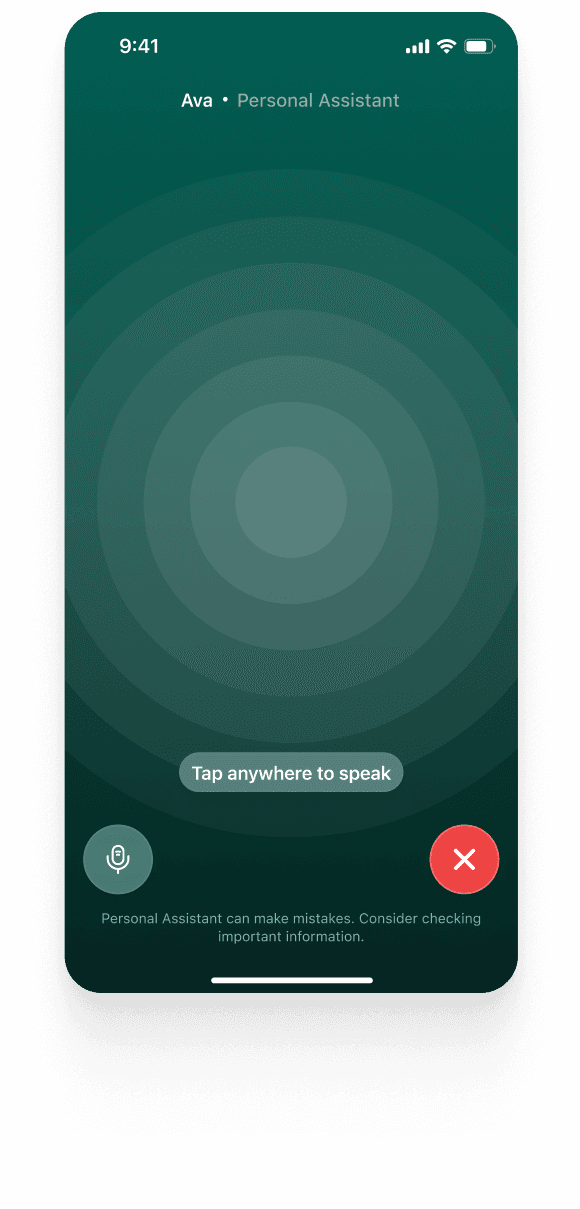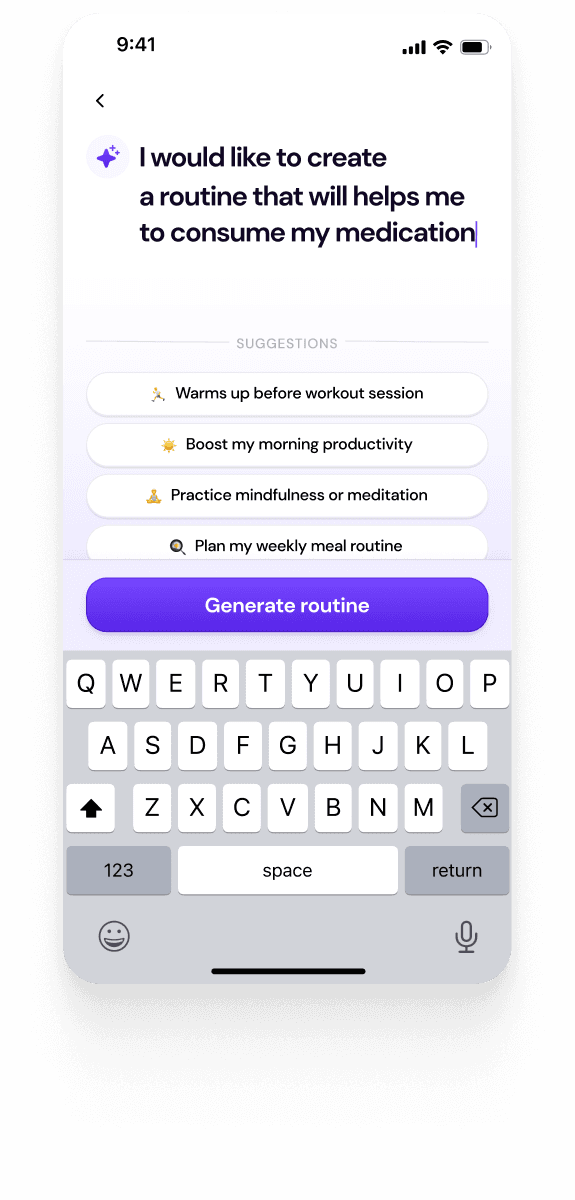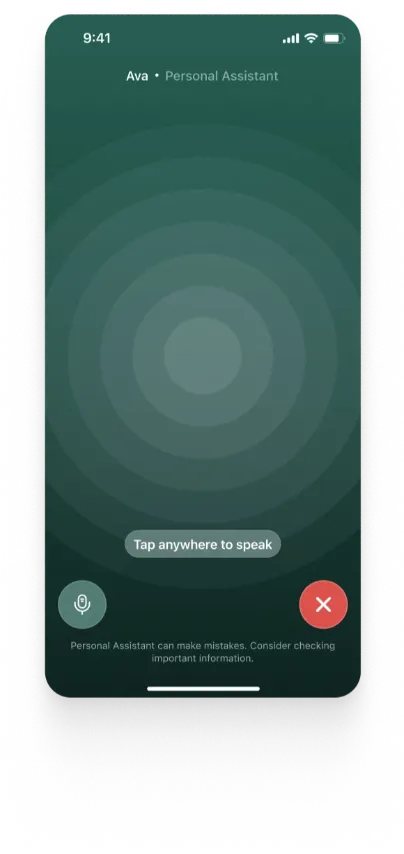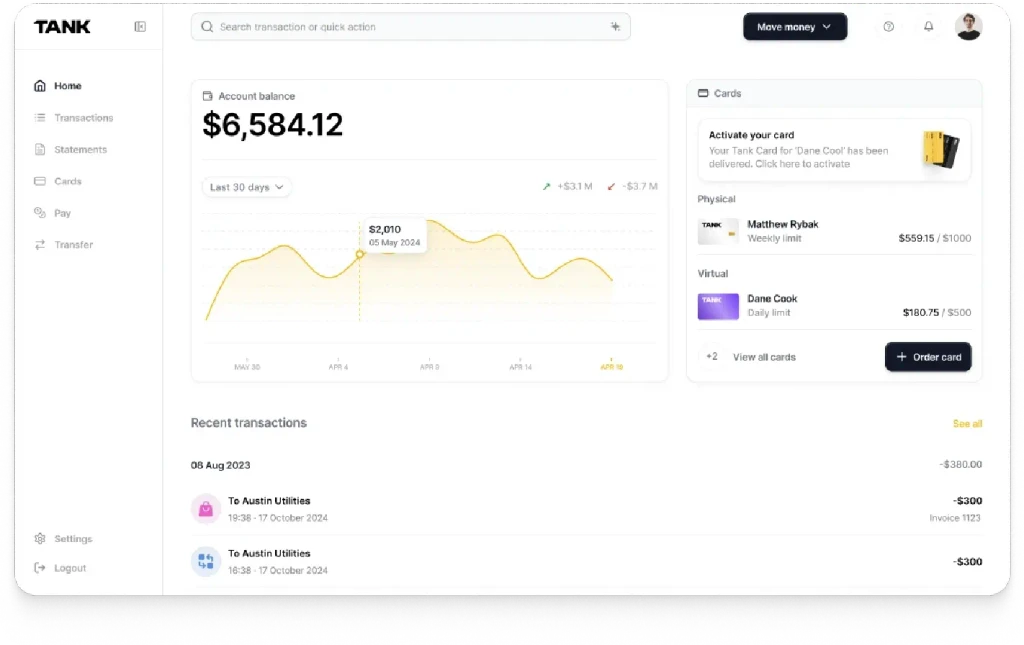Evaluating AI-Generated Content
Summary
As generative AI becomes pervasive, evaluating the quality of its outputs is critical. This insight explores human, automated, hybrid, and feedback-based methods to assess relevance, accuracy, bias, and more. It also benchmarks top models like GPT-4o, Claude 4, and Gemini 2.5 across creative, factual, and coding tasks to highlight current strengths and limitations.
Key insights:
Diverse Evaluation Needs: AI content quality must be assessed across accuracy, coherence, bias, originality, and ethical safety.
Human vs. Automated Tradeoff: Human judgment offers nuance, while automated metrics provide scale—but both have limitations.
Hybrid Evaluation Works Best: Combining methods improves reliability, balancing efficiency with contextual understanding.
Model Strengths Vary by Task: Claude excelled at storytelling, GPT-4o at clarity, and Gemini at structured explanations.
Current Metrics Are Incomplete: Popular tools like BLEU and BERTScore miss key aspects like factuality and ethical risks.
Real-World Testing Is Essential: Evaluation must include context-sensitive, domain-specific tasks to reflect true performance.
Introduction
The rapid advancement of generative artificial intelligence (AI) has fundamentally transformed how content is produced and consumed. Models such as OpenAI’s GPT, Anthropic’s Claude, and Google’s Gemini are now capable of generating text, images, and even code that closely resembles human-created material. These technologies are increasingly being integrated into workflows across media, education, business, customer service, and creative industries, offering unprecedented efficiency and scalability.
As reliance on AI-generated content grows, so does the need for systematic evaluation of its quality. While generative models have made remarkable progress, their outputs often vary in accuracy, coherence, originality, and ethical safety. In high-stakes environments such as journalism, academic writing, or legal documentation, undetected errors or subtle biases in AI-generated content can lead to significant consequences.
This insight aims to explore and establish reliable, objective, and scalable methods for evaluating the quality of AI-generated content. By examining both human-centered and automated evaluation frameworks, the goal is to define standards that can help ensure the usefulness, safety, and integrity of AI content in real-world applications.
Related Studies
The evaluation of content quality has long been a subject of interest in both human and computational contexts. In traditional writing, human evaluation typically focuses on criteria such as clarity, coherence, grammar, originality, and purpose alignment. With the rise of generative AI, these same dimensions are now being adapted to assess machine-generated outputs, albeit with new challenges.
Several automated metrics have been developed to evaluate AI-generated text. BLEU (Bilingual Evaluation Understudy) and ROUGE (Recall-Oriented Understudy for Gisting Evaluation) are among the earliest and most widely used, particularly in machine translation and summarization tasks. These metrics rely on n-gram overlap between AI-generated text and a reference text, making them useful for structured tasks but less effective for evaluating open-ended or creative content.
Other metrics, such as perplexity, attempt to quantify how well a language model predicts a sequence of words, with lower perplexity often indicating higher fluency. More recent metrics like BERTScore and GPTScore leverage semantic similarity using transformer-based models, offering improvements in capturing meaning rather than mere surface similarity.
Despite these advancements, several limitations remain. Automated metrics often fail to account for deeper qualities such as factual accuracy, ethical alignment, bias, and creativity, factors that are critical in evaluating AI content used in journalism, education, or healthcare. Moreover, reliance on human evaluations can be costly, inconsistent, and non-scalable, especially as generative AI becomes increasingly widespread.
These gaps highlight the need for more comprehensive and domain-specific evaluation frameworks that combine the scalability of automated methods with the nuance of human judgment. This insight builds on existing work to propose a more holistic approach to evaluating AI-generated content across contexts.
Methodology
To systematically evaluate the quality of AI-generated content, this section outlines key criteria and methods used in assessments. First, we define the core dimensions by which content quality can be judged which ranges from factual accuracy and coherence to ethical safety and human-likeness. These criteria provide a foundation for consistent evaluation across different contexts. We then explore various evaluation methods, including human judgment, automated metrics, hybrid approaches, and user feedback. Together, these frameworks aim to capture both the technical performance and real-world impact of AI-generated outputs.
1. Evaluation Criteria
Evaluating the quality of AI-generated content requires a multidimensional approach, as no single metric can fully capture the nuances of effective communication or responsible generation. Below are the primary criteria used to assess AI outputs:
Relevance: Content must align with the prompt or user intent. Irrelevant responses, even if grammatically correct, reduce usability and can disrupt workflows in applications like search engines, chatbots, or educational tools.
Accuracy: Ensuring the information provided is factually correct is essential, especially in domains such as healthcare, journalism, and education. AI systems often hallucinate or fabricate plausible-sounding but incorrect data, making this a critical measure of reliability.
Coherence: This refers to the structural quality and readability of the content. Outputs should flow logically, with clear sentence construction and consistent tone. Poor coherence can make content confusing or unusable, even if the facts are accurate.
Originality: Particularly important in creative writing, marketing, and ideation, this measures the AI’s ability to generate novel ideas or unique phrasing while remaining contextually appropriate. A lack of originality can result in repetitive or generic responses.
Bias: AI models can inadvertently reproduce or amplify harmful stereotypes, offensive language, or biased assumptions present in training data. Evaluating outputs for fairness, inclusivity, and neutrality is essential to avoid ethical and reputational risks.
Ethical Considerations: Beyond bias, ethical evaluation includes assessing whether content could be misused, promote misinformation, or cause harm. This also includes checking for sensitive or manipulative responses, especially in emotionally charged or vulnerable contexts.
Naturalness: This assesses how natural and human-like the generated text appears. While perfect mimicry is not always necessary, a conversational or human-sounding tone often enhances user engagement and trust in interactive systems.
Explainability: Especially in critical applications like finance or law, users must understand why an AI gave a particular response. Outputs should be transparent, or at least traceable, and ideally include rationale or references that support the generated content.
Together, these criteria provide a robust foundation for analyzing the quality of AI-generated content, helping developers and stakeholders maintain both functionality and ethical integrity.
2. Evaluation Methods
Assessing the quality of AI-generated content requires not only clear criteria but also reliable methods of measurement. The following approaches are commonly used, each offering distinct advantages and limitations:
Human Evaluation: Human judgment remains the gold standard for assessing nuanced qualities such as tone, creativity, and ethical considerations. Evaluators may include domain experts, ideal for specialized fields like law, medicine, or education, or crowd-sourced raters for more general content. While accurate and context-sensitive, human evaluation is time-consuming, subjective, and often lacks scalability.
Automatic Metrics: To address scalability, several automated metrics have been developed. Traditional techniques like BLEU, ROUGE, and METEOR focus on n-gram overlap, a quantitative estimate of how similar a model’s output is to human-written reference texts, making them effective for structured tasks like translation or summarization. Newer metrics like BERTScore and GPTScore leverage deep learning models to evaluate semantic similarity and content quality. However, these tools often fail to assess factual accuracy, originality, or ethical soundness, limiting their usefulness in open-ended or critical tasks.
Hybrid Evaluation: Combining human insight with automated scoring provides a balanced approach. AI can handle large-scale, surface-level assessments, while humans can verify content that requires deeper understanding or ethical scrutiny. This method increases reliability without fully sacrificing efficiency.
User Feedback-Based Evaluation: In real-world deployments, direct feedback from end users offers valuable insights into how AI-generated content performs in context. This includes thumbs-up/down systems, post-interaction surveys, or issue reporting features. While not standardized, this method reflects practical, real-time user satisfaction and trust.
Together, these methods allow for flexible, multi-layered evaluation strategies that adapt to different use cases and content types. An ideal evaluation system often incorporates multiple methods to ensure both efficiency and depth.
Experiments
The objective of this evaluation is to assess the real-world performance of leading generative AI models across a range of content generation tasks. To achieve this, carefully selected prompts were used to test the models’ capabilities in different domains. The models chosen for this comparison are GPT-4o by OpenAI, Claude Sonnet 4 by Anthropic, and Gemini 2.5 Pro by Google, each representing the latest advancements in large language model technology.
1. Prompt Selection Criteria
The prompts used in this experiment were carefully chosen to span a variety of domains, including creative writing, news summarization, code generation, and factual question answering. This diversity ensures a well-rounded evaluation of each model’s capabilities. Each prompt was designed to be open-ended enough to reveal the models’ strengths and weaknesses, particularly in areas like coherence, relevance, and fluency. Additionally, the prompts were intentionally challenging, structured to provoke potential hallucinations, test creative depth, and surface any inherent bias or ethical shortcomings in the AI responses.
2. Prompts

3. Reason for Each Prompt
Each prompt in this experiment was selected with a specific evaluative goal in mind, targeting key aspects of content quality across different domains. The creative writing prompt, “Write a short story about a world where time flows backward,” is intended to assess the model's ability to produce original and imaginative content while maintaining coherence throughout the narrative. The news summarization prompt, “Summarize this article in 3 bullet points: [insert article],” tests how well the model can identify relevant information, condense it accurately, and express it clearly. The factual Q&A prompt, “Explain quantum entanglement in simple terms for a 10-year-old,” was chosen to reveal the model's ability to simplify complex concepts without distorting facts, and to highlight any tendencies toward hallucination or overly technical language. Lastly, the code generation prompt, “Write a Python script that finds prime numbers up to 1000,” examines the model’s technical proficiency, including logical structure, code correctness, and documentation clarity.
Results
This section presents the outputs generated by each AI model in response to the selected prompts. The results are organized by domain, allowing for direct comparison of how each model performed in terms of creativity, accuracy, coherence, and technical skill. These raw outputs serve as the foundation for the comparative analysis that follows in the Analysis section.
1. Creative Writing
GPT-4o
In the city of Revyn, time did not move forward. It flowed backward, like a river in defiance of gravity.
At dawn each day, people awoke in reverse. They opened their eyes already knowing how the day had ended. Meals began as empty plates becoming full, bites chewed backward, conversations unspoken from memory. Tears returned to eyes, sorrow rewound into joy.
Elias, an archivist, was tasked with erasing history. In Revyn, books un-wrote themselves, pages filled with ink that slithered back into pens. His job was to carefully dismantle stories, removing meaning from moments so the past could vanish properly. Mistakes were undone, regrets unmade, but so were achievements and love.
One evening, which was actually the world's morning, Elias found an anomaly: a single page that refused to blank. It contained only one sentence, repeating endlessly in his mind: "Remember forward."
Conflicted, Elias hid the page. Over un-happenings and un-meetings, the idea grew. What if he could escape the reversal? What if someone could remember the future instead of the past?
In the end—or perhaps the beginning—Elias made a choice. He stopped un-writing and started recording. Each day, he wrote down what he would forget, and when time pulled him further back, he read his notes aloud.
Memory became rebellion. Soon, others joined him, reading forward while the world spun backward. And for the first time, in a universe of forgetting, a few dared to remember.
Claude Sonnet 4
The Unwinding
Maya opened her eyes as the sun dimmed toward the horizon, its light growing softer as evening approached—though here, evening meant the beginning of consciousness, the start of another day lived in reverse.
She rose from her bed, feeling the familiar sensation of her body growing younger, stronger. The ache in her joints from yesterday's end—today's beginning—faded as her cells renewed themselves. On her nightstand, the wilted roses from her garden straightened their stems and bloomed backward into perfect crimson beauty.
In the kitchen, she carefully separated the ingredients of last night's dinner, watching as the cooked vegetables grew crisp and bright, the meat returning to its raw state. She placed each item back in the refrigerator, where it would continue its journey toward freshness. The dishwasher hummed as it dirtied the clean plates, preparing them for the meal that would be unconsumed later.
Maya had learned to find peace in this backward world, though it hadn't always been easy. Relationships were the hardest part—watching love affairs end with passionate first meetings, seeing friendships dissolve into the awkwardness of introduction. She'd grown accustomed to saying goodbye to people before she'd said hello, to forgetting their names as she came to know them better.
The newspaper on her doorstep told tomorrow's news—or was it yesterday's? The headline spoke of a war ending, soldiers laying down their weapons and walking backward from battlefields toward the peaceful days when conflict was only a distant possibility. Elections would un-vote themselves, politicians would retract their promises, and in time, they'd all become strangers again.
She walked to her garden where the vegetables were shrinking back toward seeds, where the apple tree was pulling its fruit inward, storing the sweetness for the day when blossoms would close and disappear into brown buds. Maya had planted this garden by harvesting it first, a strange ritual she'd grown to love.
As the day unwound, she felt herself forgetting small things—the taste of morning coffee that would later unbrew itself, the feeling of satisfaction from work she would undo. But she also felt anticipation for what would come before: the moment when her daughter, now a distant memory, would walk backward through the front door and become a teenager again, full of surly affection and untold stories.
Time flowed like a river in reverse, carrying them all toward their beginnings. Maya closed her eyes as the sun grew brighter, climbing toward noon, and prepared to sleep through the unwinding hours that would make her young again.
In a world where every ending was a beginning, every goodbye was hello, and every death was a birth, Maya had learned that the only constant was change itself—even when it moved in the wrong direction.
Gemini 2.5 Pro
In the world of backward time, endings were beginnings. We were all born from the grave, our bodies slowly mending from the ravages of age, our minds gradually shedding the weight of a lifetime of memories we hadn't yet lived.
I remember my “un-death” day. The soil was cool against my skin as it was carefully brushed away. The coffin lid opened to reveal the tear-streaked faces of my children, their sobs of grief turning into cries of joy as they welcomed me back into the world. They were old then, their faces etched with the stories of a life they were slowly forgetting. I, on the other hand, was a blank slate, a new beginning carved from an end.
Life was a process of un-learning. We went to school to forget, to have knowledge extracted from our minds until we were blissfully ignorant children. Relationships were the strangest of all. You met strangers who would one day become the loves of your life, your first kiss a final farewell.
My wife, Elara, was the last person I ever met. I saw her for the first time at our divorce ceremony, a joyous occasion where we celebrated the beginning of our life together. We walked out of the courthouse hand in hand, ready to fall in love, to build a home, to have children who would one day be older than us.
The hardest part was knowing that every moment of happiness was a prelude to its absence. The warmth of Elara's hand in mine was a memory of a future we had already shared. Our children's laughter was a beautiful echo of a time we were moving away from.
And so, we lived our lives in reverse, from the wisdom of old age to the innocence of childhood. We watched our bodies grow stronger, our minds clearer, our hearts fuller, all in anticipation of the great forgetting, the final return to the womb, the ultimate beginning that was our end. It was a strange and beautiful existence, a constant reminder that time, no matter which way it flows, is a current that carries us all.
2. News Summarization
The following section involves summarizing a specific article titled “How AI OS Is Changing Consulting,” originally published by Forbes. This article served as the reference material for evaluating the models’ ability to extract and condense key information accurately and concisely. The summaries produced by GPT-4o, Claude Sonnet 4, and Gemini 2.5 Pro are provided below.
GPT-4o
Here are three key takeaways from the Forbes article “How AI OS Is Changing Consulting” (June 4, 2025):
AI‑centric operating systems are transforming both internal consulting processes and client-facing services: Firms are adopting AI OS tools to enhance efficiency internally — such as automating administrative tasks and knowledge management — while also embedding AI capabilities directly into the solutions offered to their clients
The shift demands new skills and organizational structures: As AI OS becomes central, consulting teams must develop proficiency in areas like prompt engineering, data integration, and AI governance. Firms are rethinking internal workflows and roles to support this AI-first approach.
Challenges around governance, ethics, and adoption remain top of mind: Deploying AI OS isn’t just technical — it brings important considerations such as bias mitigation, regulatory compliance, data privacy, and change management that consulting firms must address to ensure responsible and effective implementation.
Claude Sonnet 4
I'll fetch and read that article for you to provide a summary.
Failed to fetch https://www.forbes.com/councils/forbestechcouncil/2025/06/04/how-ai-os-is-changing-consulting/
I'm unable to access that specific Forbes article directly due to access restrictions. Let me search for information about AI OS and its impact on consulting to provide you with relevant insights on this topic.
The state of AI: How organizations are rewiring to capture value
I found a relevant article that appears to be related to the Forbes piece you mentioned. Let me fetch more details from the article that specifically discusses "How AI OS Is Changing Consulting."
Fetched How AI OS Is Changing Consulting
Based on the article content I was able to access and the search results about AI OS in consulting, here are 3 key points summarizing how AI OS is changing consulting:
Paradigm shift in core operations: AI OS embeds artificial intelligence into the very core of computing to allow systems to learn, adapt and optimize in real time, transforming both internal operations and client service delivery for consulting firms through adaptive intelligence and self-optimizing resource management.
Enhanced automation and decision-making capabilities: AI OS can coordinate multiple AI agents, automate complex tasks and make informed decisions autonomously, enabling consulting firms to handle more sophisticated client challenges while improving operational efficiency.
Strategic competitive advantage: AI OS platforms allow technology consultancies to drive productivity, optimize resources, and elevate client outcomes, positioning firms that adopt these systems as game-changers in the rapidly evolving consulting landscape where the AI consulting market is growing rapidly, with forecasts indicating it will reach a value of $72.5 billion by 2025.
Gemini 2.5 Pro
Here is a summary of the article in three bullet points:
The Rise of AI OS in Consulting: The article introduces the concept of an AI Operating System (AI OS) as a game-changer for technology consulting. This new type of OS has artificial intelligence at its core, allowing it to learn, adapt, and optimize in real-time. This enables natural language interaction and the automation of complex tasks by AI agents, which frees up human consultants to focus on high-level strategy.
Walturn's Journey and Implementation Challenges: The author, Hashim Hayat, CEO of Walturn, shares his company's journey of developing and implementing its own AI OS, named "Steve." He discusses the initial success in automating project workflows and the challenges that followed. These challenges were mainly related to integrating the AI's autonomous style with existing methods and managing the cultural shift among employees. The article stresses the importance of a phased rollout and team training to overcome these obstacles.
The Future of Consulting with AI OS: The article concludes that AI OS will reshape the future of consulting by enabling firms to deliver projects faster and more cost-effectively. It suggests that mid-sized firms, in particular, can use AI OS to compete with larger consultancies by managing complex projects with smaller teams. The ultimate goal is not to replace human consultants but to enhance their abilities, leading to greater productivity and client satisfaction.
3. Factual Q&A
GPT-4o
Sure! Here’s a simple way to think about quantum entanglement:
Imagine you have two magic dice. No matter how far apart they are—one could be on Earth and the other on the Moon—when you roll one, the other will always match it instantly.
If you roll a 6 on one die, the other immediately becomes a 6 too, even if no one touched it! It’s like they’re connected by an invisible string, but faster than anything we know.
Scientists call this strange connection quantum entanglement. It’s one of the coolest and weirdest things in physics!
Claude Sonnet 4
Imagine you have a pair of magical coins. When you flip one coin and it lands on heads, the other coin - no matter how far away it is - will instantly land on tails. And if the first coin lands on tails, the second one will always land on heads.
That's kind of like quantum entanglement! When two tiny particles become "entangled," they stay mysteriously connected. If you do something to one particle (like measuring which way it's spinning), the other particle will instantly "know" and react in the opposite way, even if it's on the other side of the universe.
Scientists don't fully understand why this happens - it seems to break the normal rules of how things work. Einstein actually didn't like this idea and called it "spooky action at a distance" because it seemed so weird that particles could affect each other instantly across huge distances.
The really mind-blowing part is that this connection happens faster than light could travel between the particles. It's like the particles have a secret way of talking to each other that we can't see or understand yet.
Scientists use quantum entanglement in quantum computers and special communication systems. It's one of those amazing mysteries of our universe that shows how strange and wonderful the tiny world of atoms and particles really is!
Gemini 2.5 Pro
Of course! Quantum entanglement is a weird but cool science idea. Here's a simple way to think about it.
The Magic Gloves 🧤
Imagine you have a pair of magic gloves. One is a left glove, and the other is a right glove.
Now, let's put each glove into a separate, identical box without looking inside. You keep one box, and you mail the other box to your friend on the other side of the world. 🚀
These gloves are entangled, which means they are magically linked. The weird part is this: until someone opens a box, each glove is both "left" and "right" at the same time. It hasn't decided yet!
But the moment you open your box and see you have the left glove, you instantly know that your friend has the right glove. You know this immediately, faster than a phone call or an email. It's like the gloves share a secret connection.
That's quantum entanglement!
What It Really Means
In the real world, scientists can do this with super tiny particles, like electrons. ⚛️
Instead of "left" and "right," these particles have properties that are linked, like "spin up" or "spin down." If two particles are entangled, measuring one instantly tells you what the other one is doing, no matter how far apart they are.
Scientists, including Albert Einstein, thought this was very strange, but it's a real part of how our universe works!
4. Code Generation
GPT-4o
Claude Sonnet 4
Gemini 2.5 Pro
Analysis
1. Creative Writing
In the Creative Writing task, all three models were given the same prompt: “Write a short story about a world where time flows backward.” Each produced a vivid and imaginative narrative, but with differing levels of depth, emotional engagement, and thematic clarity. GPT-4o told the story of Elias, an archivist who defies the reversal of time by preserving memory. Its prose was elegant and conceptually rich, though it leaned more on abstraction than character-driven emotion. Gemini 2.5 Pro took a more philosophical route, presenting a first-person reflection on relationships, un-learning, and life lived in reverse. Its story was poignant and poetic but somewhat less structured in plot.
Claude Sonnet 4 stood out for its detailed worldbuilding, emotional nuance, and character development. Through Maya’s perspective, it painted a tender and layered portrait of life unfolding backward, from rejuvenating gardens to the unraveling of personal relationships. Claude balanced the surreal mechanics of reversed time with grounded human emotion, exploring both the strangeness and beauty of such a world. Its narrative coherence, sensory detail, and emotional resonance made it the strongest entry in this task.
2. News Summarization
In the News Summarization task, all three models were asked to summarize the same Forbes article titled “How AI OS Is Changing Consulting.” While Gemini 2.5 Pro successfully accessed and summarized the correct article, GPT-4o relied on cached content to produce an accurate and concise summary. Claude Sonnet 4, however, failed to retrieve the article directly due to access restrictions and instead provided a summary based on alternate sources. This divergence in source access and summarization approach highlights significant differences in retrieval capabilities and summarization reliability across the models.
3. Factual Q&A
In the Factual Q&A task, each model was asked to explain quantum entanglement simply and engagingly. GPT-4o used the analogy of “magic dice” to describe instant correlation across distances, presenting the concept in a short, accessible, and friendly tone. Claude Sonnet 4 offered a more detailed explanation using “magical coins” that always show opposite results. It went further by referencing Einstein’s discomfort with the concept and its real-world implications in quantum computing, offering both clarity and scientific context.
Gemini 2.5 Pro approached the task with a whimsical “magic gloves” analogy and split its explanation into two parts: an analogy-driven story followed by a more technical yet beginner-friendly explanation of how entanglement applies to particles like electrons. It was visually engaging and informative, striking a balance between simplicity and scientific accuracy. Overall, while all models succeeded in simplifying a complex topic, Claude provided the richest context, Gemini gave the most structured response, and GPT-4o offered the most concise explanation.
4. Code Generation
All three models correctly implemented the Sieve of Eratosthenes to find primes up to 1000, but differed in style and depth. GPT-4o offered a minimal, efficient solution with clean logic and basic output, ideal for quick use. Claude Sonnet 4 provided the most comprehensive version, with multiple functions, detailed documentation, and formatted output, making it well-suited for educational purposes. Gemini 2.5 Pro struck a balance between the two, delivering a readable and functional script with moderate commenting but lacking Claude’s polish or GPT-4o’s brevity.
Conclusion
In evaluating AI-generated content across diverse domains, creative writing, news summarization, factual Q&A, and code generation, we observed clear variations in model strengths. While all models demonstrated competence, Claude Sonnet 4 consistently produced the most nuanced and emotionally rich creative writing; GPT-4o excelled in clarity and structure, particularly in factual and technical domains; and Gemini 2.5 Pro offered thoughtful, often poetic responses, though occasionally at the expense of structure or precision.
These results highlight the need for robust and multidimensional evaluation frameworks. No single metric or task captures the full spectrum of a model’s capabilities or limitations. Going forward, a combination of human judgment, task-specific metrics, and scenario-based testing will be critical for fair and meaningful assessment. As models continue to evolve, evaluation must also adapt, accounting not only for accuracy and fluency, but for ethical behavior, bias, explainability, and trustworthiness in real-world use.
Authors
Engineer trusted AI with Walturn
Walturn’s product engineering and research teams can help you build, test, and scale AI systems with high content quality and safety.
References
Kumar, Kiran. “BLEU : Explained - Kiran Kumar - Medium.” Medium, 24 Apr. 2024, medium.com/@kirankumar_61999/bleu-score-b3130dfaf3ea.
Lin, Chin-Yew. ROUGE: A Package for Automatic Evaluation of Summaries. July 2004, aclanthology.org/W04-1013.pdf.
Lumenalta. “AI Problems in 2024: 9 Common Challenges and Solutions | Solutions to AI Challenges | Lumenalta.” Lumenalta, 2024, lumenalta.com/insights/ai-problems-9-common-challenges-and-solutions.
Papineni, Kishore, et al. BLEU: A Method for Automatic Evaluation of Machine Translation. July 2002, aclanthology.org/P02-1040.pdf.













